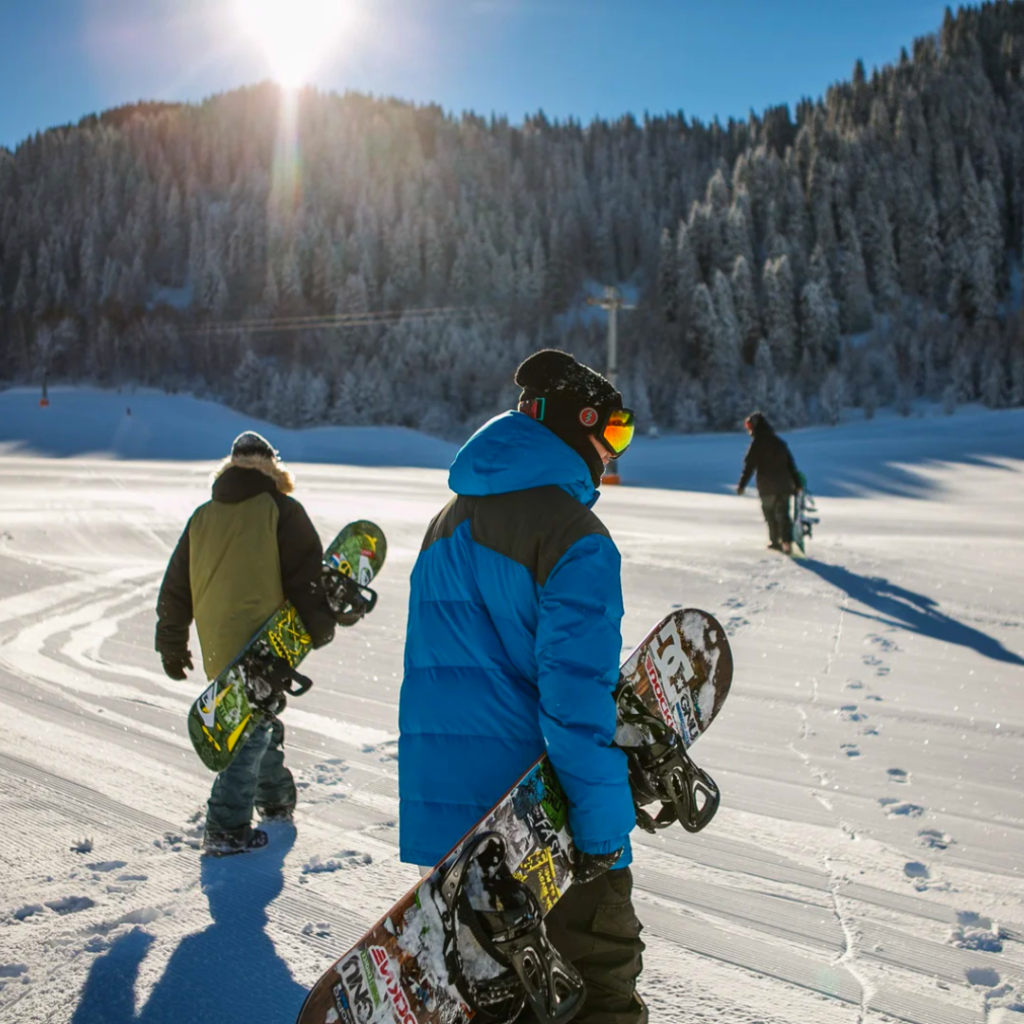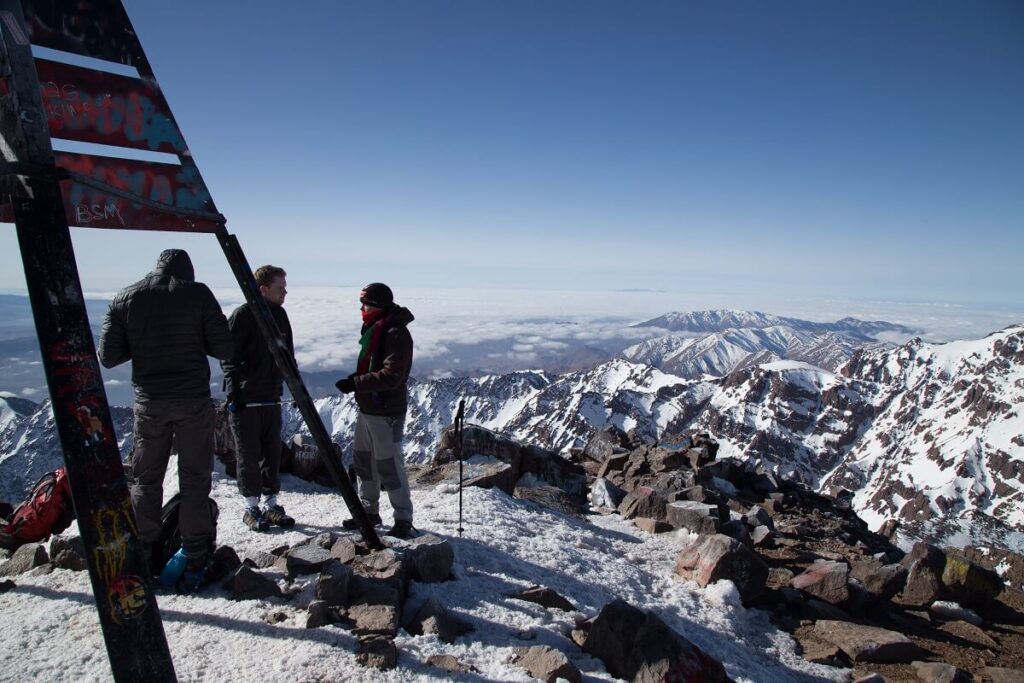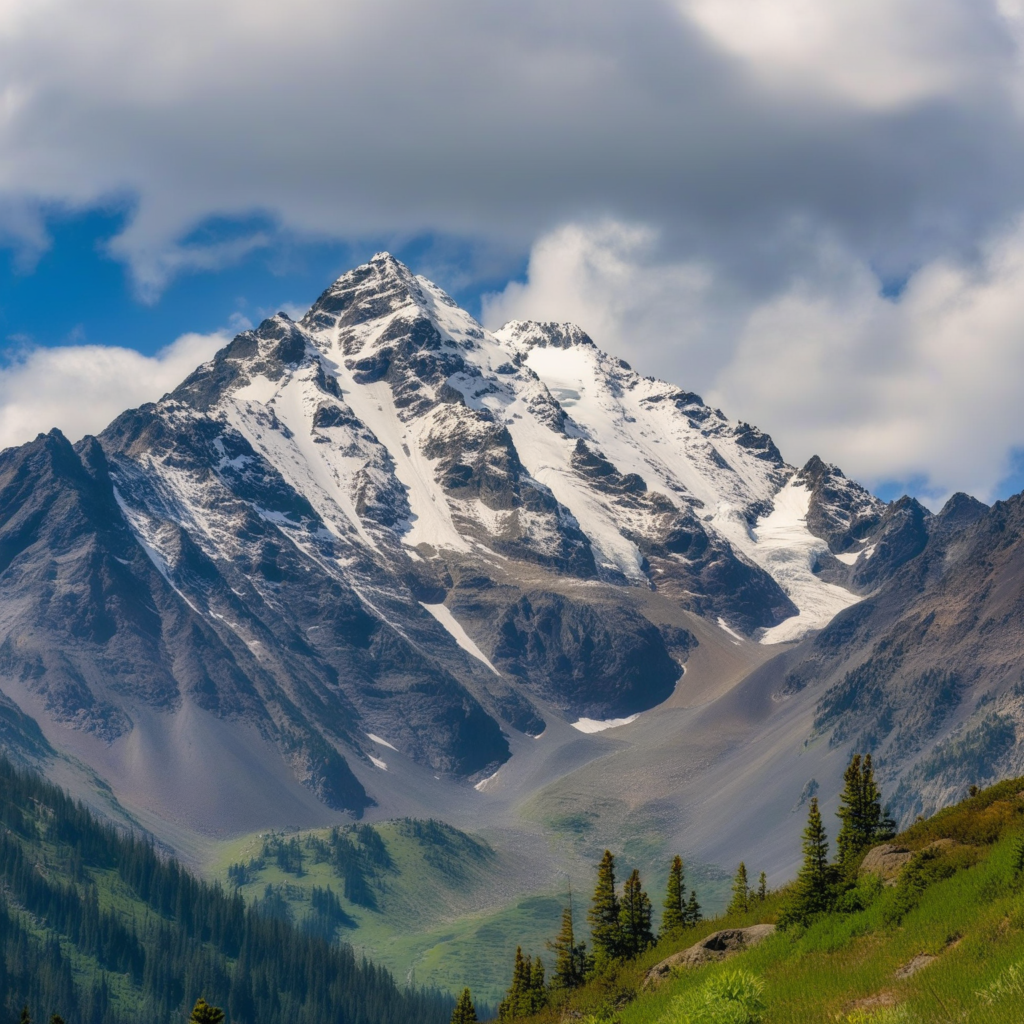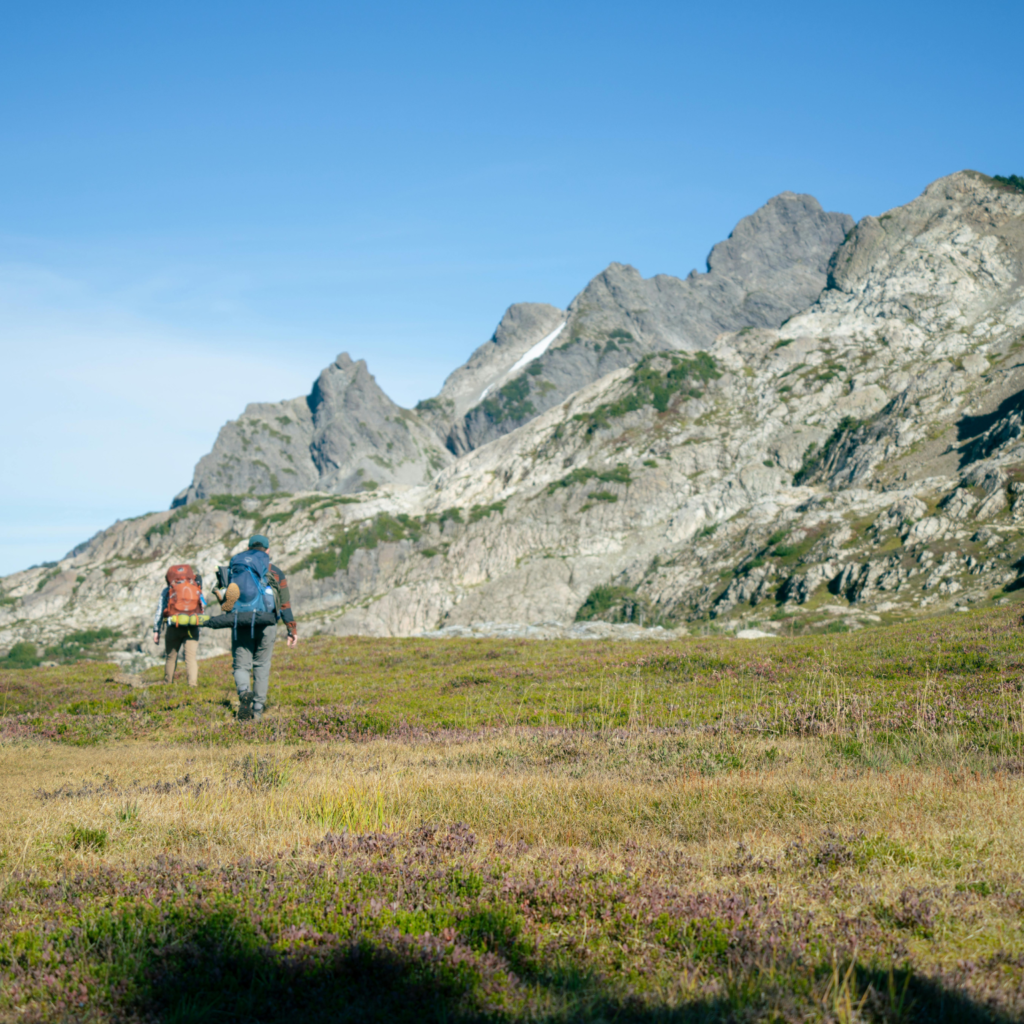blog
- Home
- blog
Traditional Berber Cuisine at Gîte O'Gogtacheddirt
Breakfast:
Lunch
Dinner
At Gîte O’Gogtacheddirt, food is as much an experience as it is a meal. The hosts pride themselves on offering authentic Berber cuisine, prepared with locally sourced ingredients and traditional recipes passed down through generations. Guests can enjoy hearty, flavorful dishes that reflect the rich culture of the Atlas Mountains.
Sample Meals at the Gîte:
Breakfast: Start the day with freshly baked bread, served with olive oil, honey, and homemade jams. Accompany this with traditional Moroccan mint tea for an energizing start.
Lunch: Enjoy a comforting tagine, a slow-cooked stew with tender vegetables, locally sourced lamb or chicken, and aromatic spices. A salad of seasonal vegetables, flavored with herbs and olive oil, often accompanies the main dish.
Dinner: Guests are treated to a warm bowl of harira (a Moroccan soup made with tomatoes, lentils, chickpeas, and herbs), followed by couscous or another tagine variety. The meal concludes with fresh fruit and sometimes traditional Moroccan pastries.
Dining Experience:
Meals are served in a communal setting, allowing guests to connect, share stories, and appreciate the welcoming spirit of Berber hospitality. Hosts are always happy to share stories behind the dishes, giving guests a true taste of life in the Atlas Mountains.
This immersive food experience makes every meal at Gîte O’Gogtacheddirt memorable, nourishing, and rooted in tradition.


Insider Tips for a Memorable Atlas Mountains Experience
With its stunning peaks, scenic valleys, and welcoming local communities, the Atlas Mountains offer a wealth of experiences that go beyond the usual travel itinerary. These tips will help you delve deeper into the region’s beauty and culture.
1. Best Time for a Cultural Experience
- Plan Around Local Festivals: Visiting during festivals like the Imilchil Marriage Festival in September or the Almond Blossom Festival in February in Tafraoute offers an authentic glimpse into Berber traditions, complete with vibrant dances, local music, and community celebrations.
- Weekly Markets: Many towns have “souk” days when villagers gather to trade, shop, and socialize. These markets are fantastic opportunities to sample local food and observe daily life in the mountains.
2. Transportation Tips for Easy Access
- Shared Taxis (Grand Taxis): These are popular for traveling between towns and villages. They’re affordable and offer a chance to meet locals. Grand Taxis generally operate from major cities like Marrakech to mountain towns such as Imlil or Asni.
- Private Drivers: For a more personalized experience and flexibility, consider hiring a private driver, especially if you’re planning to visit multiple villages or need access to remote areas.
- Hiking Transfers: Some gîtes and local agencies offer hiking transfers, dropping you off at the start of a trail and picking you up at the endpoint. This can be an excellent option for linear hikes where a circular route isn’t feasible.
3. Packing for Adventure and Comfort
- Day Trip Essentials: Bring a portable power bank, as electricity may not be accessible in remote areas. Also, pack light snacks, since shops are limited along trails.
- Overnight Comforts: For those staying in gîtes or camping, consider bringing a lightweight sleeping liner and a small flashlight, as electricity in some gîtes can be limited or turned off at night.
- Health Precautions: Bring any essential medication and a first-aid kit. High altitudes and unfamiliar foods may require adjustments, so it’s wise to carry basic medications for altitude sickness, digestion, and dehydration.
4. Eco-Friendly Travel Practices
- Water Conservation: Water can be scarce in the mountains, especially in rural areas. Conserve water whenever possible, and consider bringing your own reusable bottle with a built-in filter.
- Respecting the Environment: Stick to marked trails and avoid trampling vegetation. If you’re camping, follow a “leave no trace” policy by taking all waste with you and avoiding disturbing wildlife.
- Support Local Eco-Initiatives: Many villages are now participating in eco-tourism efforts, which include preserving the natural environment and sustaining local livelihoods. Supporting these efforts by purchasing locally-made products or choosing eco-certified accommodations contributes positively to the community.
5. Cultural Etiquette for a Respectful Visit
- Learning Basic Phrases: A few words in Tamazight (Berber language) or Arabic can go a long way in connecting with locals. Simple greetings like “Azul” (hello in Tamazight) or “Shukran” (thank you in Arabic) are always appreciated.
- Visiting Homes and Gîtes: When invited into someone’s home or gîte, it’s customary to remove your shoes at the entrance. Accepting tea, often with mint and sugar, is a sign of respect for the host.
- Mindful Photography: While capturing the beauty of the region is natural, always ask for permission before photographing people, especially in villages where privacy is highly valued.
6. Unique Local Activities to Try
- Visit a Hammam (Traditional Bathhouse): Some villages offer hammams, where you can experience traditional Moroccan steam baths. It’s a relaxing way to unwind after a long hike and is a valued cultural tradition.
- Argan Oil Workshops: If you’re in a region known for argan trees, take the opportunity to visit a cooperative where you can see how argan oil is made. You may even be able to participate in the process and purchase fresh argan products.
- Star-Gazing Tours: With minimal light pollution, the Atlas Mountains are an incredible spot for star-gazing. Some gîtes offer night-time excursions to take in the stars, a breathtaking experience that you won’t want to miss.
7. Sample 5-Day Atlas Itinerary
- Day 1: Arrive at Gîte O’Gogtacheddirt, explore the village, and take a short local hike.
- Day 2: Embark on a moderate trek to a neighboring village, enjoy a traditional meal, and return to the gîte.
- Day 3: Visit a nearby souk for a market day experience, then relax with a cooking class at the gîte.
- Day 4: Spend the day on a full-day trek with scenic viewpoints, concluding with a hammam visit in the evening.
- Day 5: Participate in an early morning star-gazing session, followed by a hearty Moroccan breakfast before heading back.
With these travel tips, visitors will be equipped to enjoy the Atlas Mountains fully and respectfully, taking in everything from the region’s natural wonders to its cultural riches.


Travel Tips: Navigating the Atlas Mountains and Nearby Regions
The Atlas Mountains offer some of Morocco’s most breathtaking landscapes, charming villages, and unforgettable outdoor experiences. Here are essential tips for making the most of your journey in this majestic region.
1. Know the Seasons
- Spring (March to May): Ideal for trekking with pleasant temperatures and blooming landscapes.
- Summer (June to August): Higher elevations remain cool, perfect for escaping the heat.
- Autumn (September to November): Cooler weather and vibrant fall colors make this a great season.
- Winter (December to February): Snow covers the higher peaks, making it suitable for winter sports but less ideal for high-altitude hikes without proper equipment.
2. Packing Essentials
- Layered Clothing: The temperature can vary dramatically between day and night. Layered clothing is essential for comfort.
- Good Hiking Boots: The rugged trails require durable, comfortable footwear.
- Reusable Water Bottle: Staying hydrated is key, especially in the dry mountain climate.
- Navigation Tools: Offline maps, GPS devices, or local guides are helpful as trails can be remote and unmarked.
3. Hire a Local Guide
- Engaging a local guide is highly recommended, especially for lesser-known paths. Guides are knowledgeable about the safest routes, cultural insights, and hidden gems along the way.
- Supporting local guides also contributes directly to the community, helping to preserve the culture and environment.
4. Respect Local Customs and Villages
- Dress Modestly: Covering arms and legs is appreciated in traditional areas.
- Photography Etiquette: Ask for permission before photographing locals, especially in rural villages.
- Leave No Trace: Help preserve the natural beauty by disposing of waste properly.
5. Stay in a Local Gîte
- Gîtes, like Gîte O’Gogtacheddirt, offer an authentic experience with local hospitality, delicious Moroccan cuisine, and the chance to immerse yourself in the culture. They’re excellent bases for trekking and discovering nearby attractions.
6. Safety First
- Stay on Marked Trails: It’s easy to get lost on unmarked trails. Use maps, a GPS, or follow a guide.
- Altitude Awareness: If you’re hiking at higher altitudes, take time to acclimate.
- Emergency Contacts: Make sure you have a way to reach emergency services or your gîte in case of an emergency.
7. Explore Nearby Regions
- Tachddirt Village: Known for its charm and traditional way of life, this village is a great stop for cultural immersion.
- Imlil Valley: A popular starting point for Toubkal treks, it offers beautiful views and access to waterfalls.
- Ourika Valley: Accessible from Marrakech, it’s a lovely day trip with riverside cafes, Berber markets, and lush greenery.
With the right preparation, your trip to the Atlas Mountains and surrounding regions will be both safe and unforgettable. The landscape and people of this area promise an experience unlike any other.


Essential Tips for Adventure in the Atlas Mountains
Exploring the Atlas Mountains is an adventure filled with incredible landscapes, vibrant local culture, and unique activities. Here are some insider tips to help you get the most out of your experience.
1. Choosing the Right Trail
- Short Hikes for Beginners: For an easy introduction, try the shorter hikes around villages like Imlil or Ourika Valley, both of which offer beautiful scenery without high elevation challenges.
- Moderate to Challenging Treks: The Toubkal Circuit or the Tachddirt Trail is excellent for moderate hikers. Both give panoramic views and the chance to visit traditional Berber villages.
- Advanced Treks: For serious trekkers, the ascent to Mount Toubkal (North Africa’s highest peak) offers a rewarding challenge. It’s best done with a guide, and an overnight stay is recommended.
2. Connecting with Local Culture
- Attend a Haidous Dance Performance: This traditional dance of the Atlas Mountains, often accompanied by drumming and poetry, is a unique cultural experience.
- Local Markets: Berber markets offer handmade crafts, fresh produce, and local delicacies. The Asni market on Saturdays and Tahanout on Tuesdays are excellent stops.
- Community Meals: Many gîtes, including Gîte O’Gogtacheddirt, host communal meals with guests. These shared dining experiences offer authentic tastes of the region and the chance to connect with locals and fellow travelers.
3. Special Activities to Try
- Cooking Class: Learn to make traditional Moroccan dishes, from tagine to Moroccan mint tea, with local chefs. It’s a delicious way to engage with the culture.
- Mountain Biking: The trails in the Atlas Mountains are perfect for mountain biking, especially around areas like Ouirgane and Imlil. Rent a bike locally or join a guided tour for the best experience.
- Bird Watching: The mountains are home to diverse bird species, including eagles, falcons, and rare migratory birds. The varied ecosystem around Tachddirt is perfect for bird enthusiasts.
4. Weather Preparedness
- Day Pack Essentials: Include sunscreen, a hat, sunglasses, and a windbreaker, as mountain weather can change rapidly.
- Nighttime Cold: Even during summer, temperatures can drop significantly after sunset. Having a warm layer, even in warmer months, is essential for staying comfortable.
5. Photography Tips for the Perfect Shot
- Golden Hours: The early morning and late afternoon light gives the best colors and shadows for photographing mountain landscapes.
- Respectful Distance: Capture the vibrant scenes of local life from a distance to respect privacy and avoid intruding on daily routines.
- Focus on Small Details: Beyond landscapes, photograph the intricate details – traditional doorways, textiles, and local artwork all add layers to the visual story of the Atlas Mountains.
6. Booking a Gîte for Authentic Experiences
- Staying in a traditional guesthouse like Gîte O’Gogtacheddirt provides a cozy, welcoming base with local hosts eager to share their culture and stories. These gîtes also make logistics easier, as hosts often help arrange guides and activities.
7. Sample Itinerary for a 3-Day Trip
- Day 1: Arrive at Tachddirt, settle in at Gîte O’Gogtacheddirt, and explore the village.
- Day 2: Hike one of the scenic trails or try a cooking class to learn about local cuisine.
- Day 3: Visit nearby valleys or join a guided trek up to a viewpoint for a panoramic photo session before heading back.
Each tip will help travelers plan a memorable trip while embracing the culture, landscapes, and activities that make the Atlas Mountains unforgettable.

